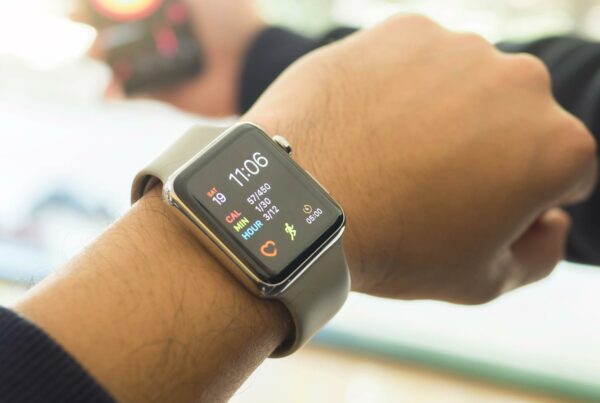A word coined by Gartner, “hyperautomation” involves “the effective use of complementary technologies to deliver end-to-end automation.” It scales existing automation using advanced technologies such as AI (artificial intelligence) and ML (machine learning). By discovering new processes ripe for automation, hyperautomation drives process efficiency at scale. As a result, it frees healthcare providers to focus on what they do best – providing better patient care.
Hyperautomation’s fundamental principles include the following:
- Robotic Process Automation (RPA)
- Data analytics
- Intelligent automation (RPA + AI and ML)
- Enterprise integration
- Computer vision
- Digital twins
- Citizen-driven development
- Cognitive process discovery & mining
- Intelligent business process management systems (iBPMS)
Healthcare entities already leverage automation using RPA in several areas of their operations. Their processes generate large amounts of unstructured and semi-structured data. Marrying RPA with AI and ML helps them create significant operational efficiencies in areas such as faster prior authorizations, better patient care, and optimized revenue cycle management. Gartner expects that by 2024, hyperautomation can help businesses slash their operating expenses by 30%.1
Why Hyperautomation in Healthcare is Gaining Traction
COVID-19 has accelerated customer demand for the digital delivery of patient care. Patients require convenient, transparent, and personalized healthcare. Healthcare hyperautomation uses end-to-end automation to improve the patient experience, helps providers meet quality standards and regulatory requirements, predicts possible healthcare fraud, and much more Over 90% of healthcare providers think that the main goal of their digital transformation efforts is to improve patient experience.2
-
Legacy systems
Legacy systems are typical in healthcare. 80% of healthcare companies use obsolete, outdated tools and processes. In addition, only 12% of businesses utilize digital transactions.3 Replacing these systems can disrupt operations and cause integration issues. By using hyperautomation, screen scraping, and optical character recognition (OCR), healthcare providers with older systems can connect to newer ones.
-
Need for Greater visibility
Healthcare systems are vast complex and interconnected. There contain myriad of legacy and new technology applications meant to solve specific challenges. However, this fragmentation means less visibility into a holistic view of operations.
The inefficiency in healthcare systems addressed by hyperautomation is far-reaching and impacts the entire spectrum of healthcare operations. From claim management to patient data, customer support, and patient-provider engagement, hyperautomation helps organizations become more competitive.
Hyperautomation can bring together disparate data sources into a common fold thereby increasing seamless visibility into operations. This visibility can help administrators and executives pinpoint specific areas of need and take incremental steps towards improving operational excellence.
-
Data deluge
Electronic Health Records (EHR), wearable sensors, and digital patient interaction generate massive volumes of data daily.
Leading pharma and healthcare firms encounter several data challenges:
- Legacy systems with manual processes and fragmented workflows
- Negligible patient-provider process transparency and audit trail non-compliance
- Higher operational costs due to monotonous, labor-intensive work
- Manual, error-prone methods that are an operating and regulatory barrier
Hyperautomation solves these problems from start to finish without human intervention, ensuring quality and regulatory compliance.
-
Management Expectations
Top management expects CIOs to meet transformation objectives cost-effectively. While RPA tools provide short-term savings, they are less effective when processes become complex. Hyperautomation, on the other hand, can combine data from disparate platforms and multiple vendors. As a result, it can effortlessly flag discrepancies and speed up regulatory compliance with minimal human intervention.
Healthcare Hyperautomation Use Cases
Hyperautomation has the potential to transform healthcare through multiple use cases:
-
AI-led diagnostics
Hyperautomation with ML, computer vision, and intelligent workflows can provide speedy, accurate results. Aided by computer vision and ML, doctors can quickly diagnose medical conditions. The system automatically prioritizes secondary readings and assigns cases by specialty, functional area, etc. After validation, diagnostic reports are directly delivered to doctors and integrated with Electronic Medical Records (EMRs).
-
Lab automation
Robotics and advanced software systems automate instrumentation in lab processes. They help speed up lab tasks that take a lot of time, reduce waste and manual work, save money, and improve efficiency.
-
Revenue cycle management
In healthcare, hyperautomation also means using conversational AI, process mining, robotic process automation (RPA), and data analytics to improve front-end sales cycle management. For example, AI-enabled virtual agents can schedule or reschedule appointments, RPA can detect missing eligibility data, and NLP-enabled voice agents can contact the insurance company to gather the missing details. So, process mining and data analytics can make it easier for patients to sign up and verify their insurance.
-
Health insurance processing
The National Health Care Anti-Fraud Association (NHCAA) estimates that healthcare fraud results in losses of $68 billion to $300 billion.4 AI and ML can identify fraud more effectively than humans, as they can swiftly sift through massive datasets to understand behavior and fraudulent tendencies. Hyperautomation assists health insurance companies in eliminating human mistakes. It also cuts down on the amount of manual work needed for prior authorization and claims processing. Faster claims cycles keep clients happy.
-
Regulatory compliance
Pharmacies, healthcare providers, medical insurance companies, and other healthcare entities must comply with regulations such as HIPAA in the US and GDPR in the EU. Automating internal audit processes to ensure healthcare compliance can help healthcare providers abide by the relevant regulations. In addition, intelligent bots can log every action in healthcare systems and quickly spot deviant behavior.
-
Research and development
Hyperautomation technologies leveraging AI models and digital twins can help expedite pharmaceutical R&D. By making digital copies of tools, human organs, genomes, or single cells for testing, digital twins can help find new drugs. In addition, deep learning algorithms help identify drug candidates for specific ailments.
-
Personalized health screening
Remote monitoring is gaining traction, especially after the pandemic-induced
lockdowns. The Internet of Things (IoT), wearables, data analytics, and digital health assistants are all becoming important parts of overall health. For instance, sensors and wearables monitor high-risk patients’ blood pressure and glucose levels, while digital health assistants increase adherence to treatment guidelines. Data analytics can also suggest plans for getting patients involved, and predictive analytics can use the data they already have to predict future illnesses. Together, all these components can revolutionize patient care.
-
Patient experience
Conversational AI and process automation tools can improve the patient experience. For example, AI-powered chatbots assist customer support professionals and analyze data. They connect with patients about health issues, provide self-service scheduling, and send notifications. They also collect information, allowing healthcare providers to intervene effectively. Sometimes, the bot may automatically forward the data to another system for further investigation. In several instances, voice biometrics provides healthcare providers frictionless access to patient information. It is also more accessible, secure, and user-friendly than conventional EHR, decreasing operational costs and data fraud.
It is becoming increasingly likely that hyperautomation capabilities will become commonplace across a wide range of business operations, rather than remaining at the cutting edge of just the more specific applications.
Hyperautomation will also improve patient care and health outcomes as the pandemic continues to accelerate the speed of transformation in the industry.
It would also provide businesses with fresh opportunities to gain a competitive edge by delivering measurable business value through significant operational improvements and ROI.
References
- https://www.Gartner.Com/En/Newsroom/Press-Releases/2021-04-28-Gartner-Forecasts-Worldwide-Hyperautomation-Enabling-Software-Market-to-Reach-Nearly-600-Billion-by-2022,” n.d. Accessed November 19, 2022.
- Deloitte Insights. “Digital Transformation,” October 26, 2021. https://www2.deloitte.com/us/en/insights/industry/health-care/digital-transformation-in-healthcare.html
- HIMSS. “HIMSS Releases 2020 Cybersecurity Survey,” November 20, 2020. https://www.himss.org/news/himss-releases-2020-cybersecurity-survey
- Background on: Insurance fraud | III. “Background on Insurance Fraud | III.” Accessed November 19, 2022. https://www.iii.org/article/background-on-insurance-fraud
- Digital twin | GSK. “Digital Twin | GSK.” Accessed November 23, 2022. http://www.gsk.com/en-gb/behind-the-science-magazine/digital-twin-using-advanced-technology-to-accelerate-vaccine-development/
- Consulting, Acumen Research and. “Hyper Automation Market Revenue to Surpass US$ 32,632 Mn by 2030 – Exclusive Report By Acumen Research And Consulting.” GlobeNewswire Newsroom, April 29, 2022. https://www.globenewswire.com/en/news-release/2022/04/29/2432127/0/en/Hyper-Automation-Market-Revenue-To-Surpass-US-32-632-Mn-By-2030-Exclusive-Report-By-Acumen-Research-And-Consulting.html














